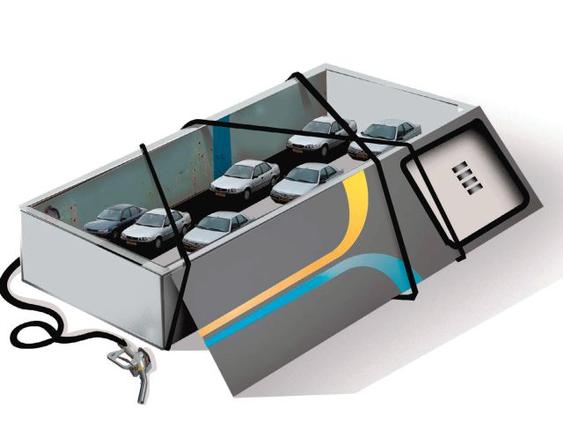 September 8; In the chorus of angry voices against the horrific gang rape of a paramedic student on a moving bus in the national capital on December 16 last, one issue that quickly became apparent was the state of public transport in urban areas. The shocking incident forced policymakers to take a relook at the management and regulation of public transport in Delhi and other urban areas.
September 8; In the chorus of angry voices against the horrific gang rape of a paramedic student on a moving bus in the national capital on December 16 last, one issue that quickly became apparent was the state of public transport in urban areas. The shocking incident forced policymakers to take a relook at the management and regulation of public transport in Delhi and other urban areas.
Concerns about the safety of women in public transport were supplemented by questions about fixing accountability — who is responsible for unregulated buses and other modes of transport, the State or urban transport authorities or the police — and about the urban transport policy itself.
The chorus derailed the government’s attempts to coax commuters into leaving their private vehicles at home and moving to public modes. And the recent suggestion to curtail the use of fuel by limiting the use of private cars has again been questioned by commuters. They want to know why they were being asked to opt for public transport when it was neither safe nor reliable.
Revamp inevitable
The realisation that public transport needs a holistic revamp has dawned, says S.K. Lohia, Officer on Special Duty at the Union Urban Development Ministry. Admitting that the public transport system is far from satisfactory, Mr. Lohia says it is unfair to blame the policy and the Centre. There is a lack of coordination and concerted efforts at the local urban levels needs to be addressed.
“After December 16, suddenly the focus was on what safety measures are in place in buses. When we drafted the new bus specifications in 2008 under the Jawaharlal Nehru National Urban Renewal Mission and made it mandatory for buses to have closed circuit cameras, LED display boards, audio-video passenger information services, everyone, from the manufacturers to the policymakers, questioned and opposed these changes,” he recalls.
A rundown of various parameters that define the success of a public transport system shows yawning gaps — most cities have unregulated bus services, the condition of buses is far from reassuring, roads and modes of transport are not safe and the concept of seamless integration with the first and last mile connectivity remains on paper.
There has been a spate of interventions by the Urban Development Ministry, first there was the National Urban Transport Policy, then came the service level benchmarks for grading cities and pilot projects of BRT and dedicated cycling tracks, advisories to opt for mass rapid transit systems and make roads safe, but with results slow and far from encouraging, the Ministry is now banking on the unified National Urban Transport Authority of India (NUTAI) to implement a unified law to govern transport and mobility.
“Public transport has to be taken up as a public service and States and urban local bodies have to show political will to invigorate the system. Currently, there is a multiplicity of authorities. We are hoping that once NUTAI is in place there will be better planning and coordination. The issues of lack of awareness and capacity-building have to be addressed. While the challenges are many, we have to admit that there has been discernible change: for example, the buses introduced under the JNNURM have been a success, the Metro is very popular. When we compare with the baseline, we have come a long way,” he says.
Prof. Dinesh Mohan of the Transportation Research and Injury Prevention Programme (TRIPP) at the Indian Institute of Technology-Delhi disagrees. “The Urban Transport Policy is too much technology-oriented. There is no dearth of means of transport, there are buses, there is the Metro, there are para-transit systems, but the question is how do you make cities better by having safer roads and better mobility.”
Prof. Mohan argues that to encourage the use of public transport, the first steps are to ensure the streets are safe and accessible. “Unless commuters, especially women and children feel safe, they will not use public transport. There is too much focus on technology, we have to shift focus on cleaner, sustainable modes of transport, stop widening of roads, reduce speed and construction of flyovers,” he says.
So while the Ministry is banking on earlier policies and newer initiatives like the NUTAI to make amends and bring in change, experts point to the need for pragmatic interventions. “There has to be change in policy, design and implementation. There has to be integrated, single window approach towards issues of mobility, energy, road safety, environment and social angles. Multiplicity of authority has destroyed the public transport systems,” says Nalin Sinha of the Delhi-based NGO Initiative For Transport Development Project.
Mr. Sinha, who was part of the team that drew up the NUTP, says public transport has to be seen as more than just a mode of commuting and mobility. “It is the first indicator of democracy and equity of the city.”
